In today’s age of ‘instant communication’, where email and social media rule the roost, the act of receiving letters or ‘snail mail’ from the humble postman is something that most of us take for granted. But did you know that 150 years ago, the postman’s job was rather perilous? Also known as mail runners, they would walk for miles lugging leather bags full of letters, armed with lanterns and a heavy staff akin to a spear. The latter was their defence against wild animals that they often encountered while on their arduous journeys to deliver mails. A newly opened postal museum in Bengaluru, ‘Sandesh’, explores this fascinating story of evolving communication channels in India. Located on Museum Road, the establishment is also known as the ‘museum of communication’, and was inaugurated on 15 August this year. It is housed in a 150-year-old heritage building, where Dr Edward Balfour founded the Government Museum way back in 1865. While the museum shifted to Cubbon Road in 1877, this building served as the postal divisional office, of which a part has now been dedicated to the museum. With high ceilings, arch-shaped windows, and brick-tiled roofs, the ambience exudes a certain vintage, a distinct old-world charm. A treasure trove of artefacts including machines, seals, hammers, stamps, uniforms, and other memorabilia, the museum has been organised into six sections or rooms. [caption id=“attachment_7542031” align=“alignnone” width=“825”] 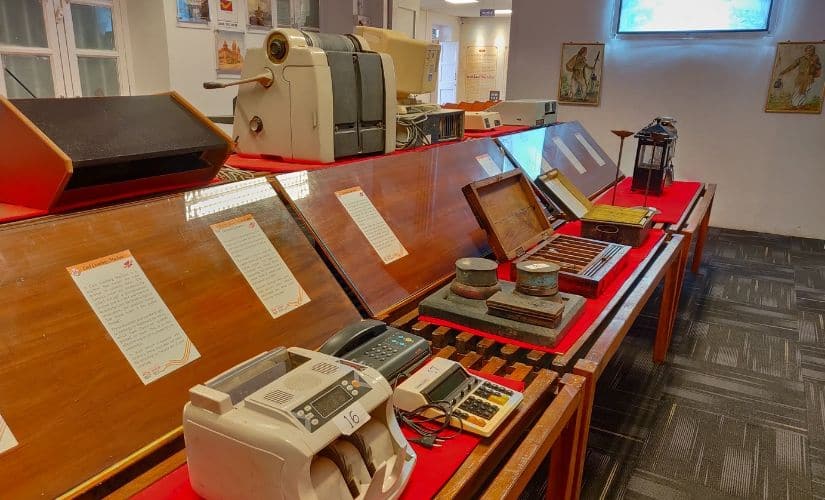 Equipment at Sandesh, the postal museum in Bengaluru[/caption] Sandesha The first room at the entrance is dedicated to stamps that were released during the pre-Independence era, leading up to the present day. Stamps released during the freedom struggle pertained to the 1857 Revolt, founding of the Indian Congress, and the Swaraj and Quit India movements. Stamps issued by the department to celebrate Indian culture and heritage, as well as Indian art and architecture, are also on display. The last part in the series boasts of stamps that recognise Indian literature, Hindustani and Carnatic music, and Indian cinema. A highlight of this room is the section dedicated to the ‘Mysore Anche’, a system of postal delivery dating back to 1672, devised by Chikka Devaraja Wodeyar of Mysore state. Anche, meaning local post in Kannada, was a system of carrying ordinary letters, book packets, newspapers and parcels from one place to another. By 1886, a whopping 15 lakh letters had been delivered through a network of 412 offices. Mysore Anche was merged with the imperial post office in 1889. [caption id=“attachment_7542071” align=“alignnone” width=“825”] 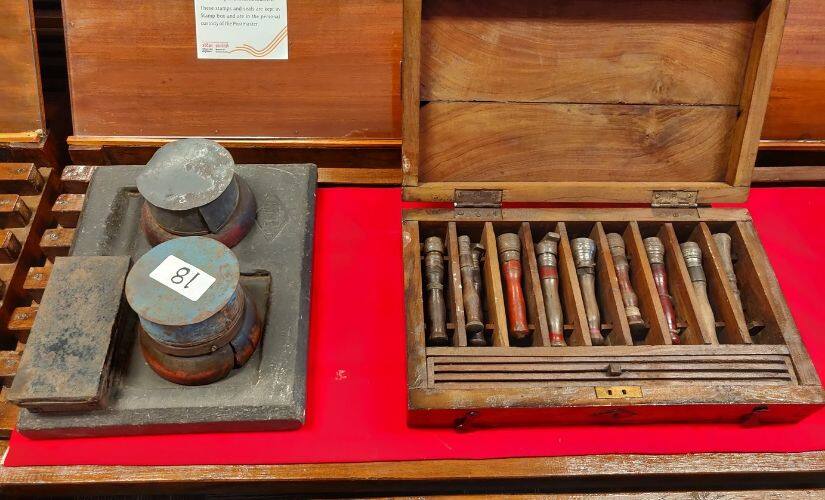 Date stamps and seals at Sandesh, the postal museum in Bengaluru[/caption] Samparka This room has postal equipment, including weighing scales, telephones and typewriters on display. Besides the fake note and barcode scanners, cash counting and photocopying machines, the multipurpose counter machines introduced during the early days of computers is noteworthy. There’s also a Morse Transmitter that used Morse Code to communicate telegrams during the 1970s. A whole range of seal and seal pads, oil lamps and lanterns, a yesteryear cashbox, as well as the complete olive-green army postal services uniform is on display. There’s also an interesting trivia about the Meghadoot Award instituted in 1984, recognising high performing postal employees. It says that the honour was given to Shri Victor Dhanraj in 1988, on account of his meritorious service as ‘India’s best postman’ that year. An original letter written by Subhas Chandra Bose from Cambridge is also on display. [caption id=“attachment_7542111” align=“alignnone” width=“825”] 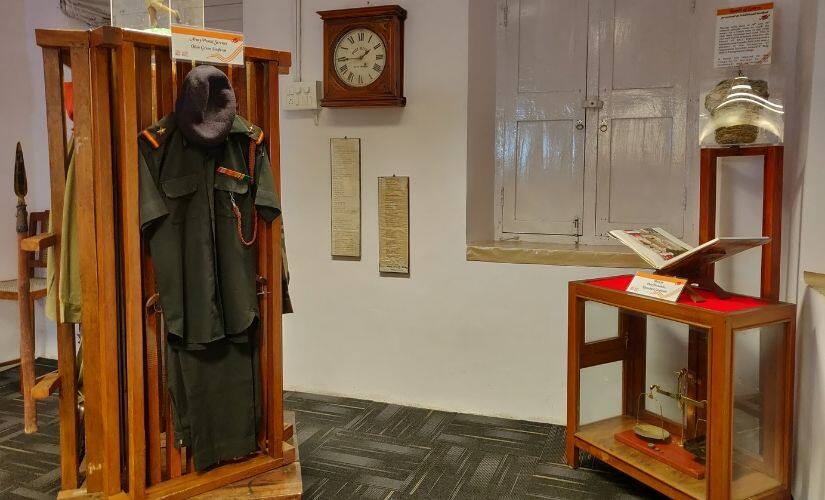 Olive-green uniform of the Army Postal Services[/caption] [caption id=“attachment_7542121” align=“alignnone” width=“825”] 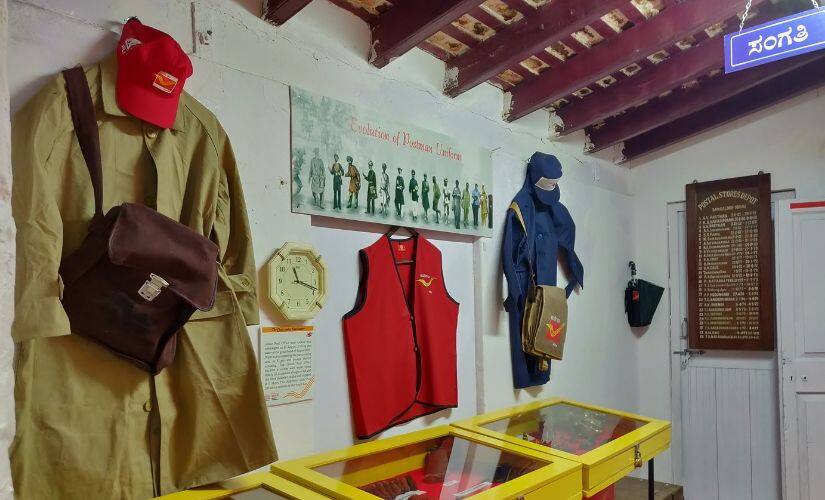 Evolution of the postman’s uniform[/caption] Samputa This section displays the system of documentation and organisation that was used by the department in the past, which includes order books, ledgers, and necessary documents maintained by the Postal Inspector. The wooden stand that is still used in post offices to store forms, like withdrawal slips, money order slips, among other things, is displayed, alongside a sample leather bag, sorting case, and a parcel box. Samvahana The advent and use of money orders (MO) to send cash across the country was a very significant development in the history of the postal department. It is surprising to note that even today, MOs are widely used in the country, especially during festivals, to send money to near and dear ones. The VSAT (Very Small Aperture Terminal) model electronic money order transmitter, which was used in the 1990s in the Bangalore GPO, is on display in this section. [caption id=“attachment_7542131” align=“alignnone” width=“825”] 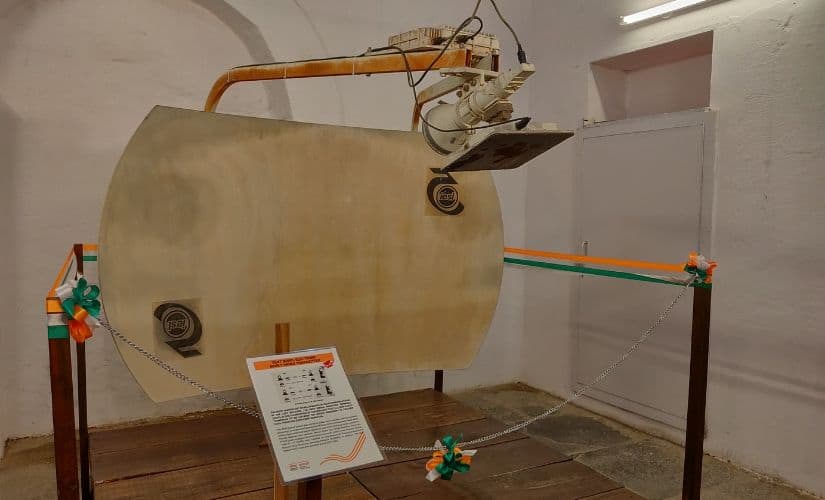 The VSAT MO transmitter[/caption] Sangathi This part of the museum showcases the evolution of the postman’s uniform, and displays all kinds of jackets, raincoats, belts and bags used by them. The various kinds of hammers, locks, badges, and the record of the postal stores depot is on display. Insightful objects include unclaimed items like brass artefacts, returned letters, and a clock recovered from the Lolsur post office (near Gokak in North Karnataka) that had been submerged in the devastating floods of 2019. One must also not miss out on the different patterns of cancellation, which is essentially a postal marking applied on a stamp to prevent its further use. [caption id=“attachment_7542171” align=“alignnone” width=“825”] 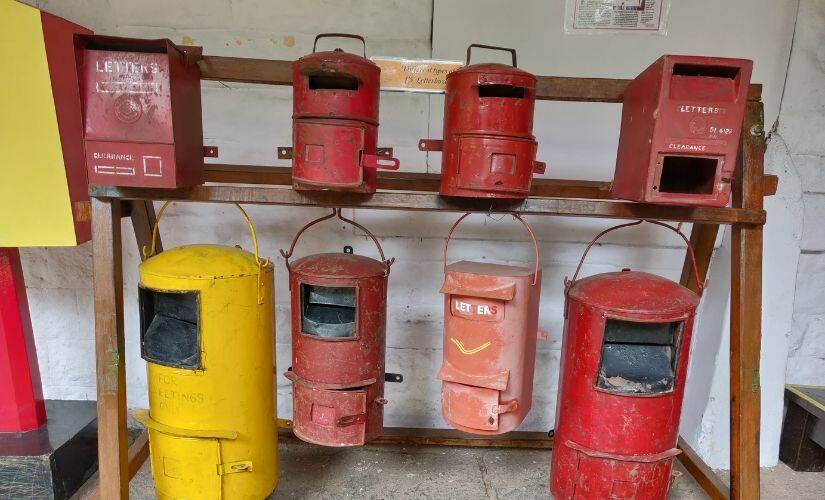 Evolution of post boxes on display at Sandesh, the postal museum in Bengaluru[/caption] Sangraha A haven for philatelists, this section has a vast display of stamps, special covers and items, like a stamp cancellation machine, a signoscope (optical watermark detector), and a philascop (a stamp viewer used to check the authenticity of the stamp). Also on display are the different kinds of post boxes used over the years, along with yesteryear bicycles and two-wheelers used by postmen, evoking nostalgia. [caption id=“attachment_7542151” align=“alignnone” width=“825”] 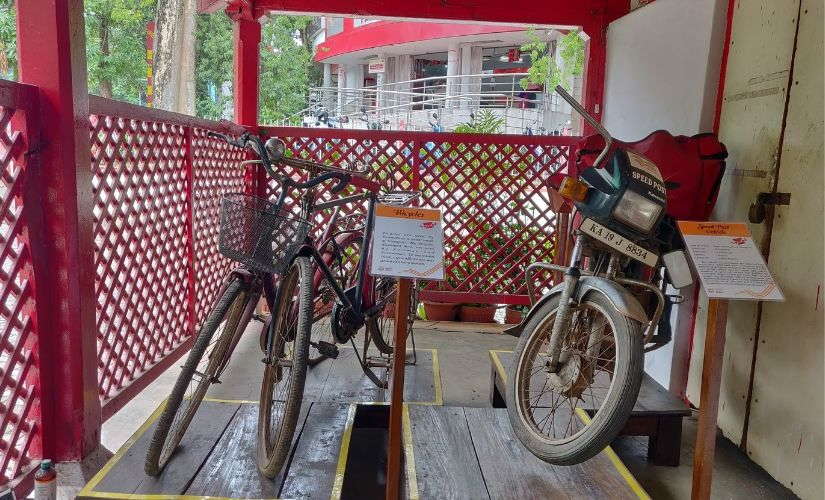 Vehicles used by postmen down the years[/caption] Apart from an audio-visual film on the genesis of the postal and communication department, the museum has activities for children and adults, including one where visitors can make a customised stamp with their own pictures. Sandesh: Museum of Communication, Bengaluru, has free entry, and is open on all postal working days, from 10 am to 4 pm.
A newly opened postal museum in Bengaluru, ‘Sandesh’, explores the fascinating story of evolving communication channels in India. Also known as the ‘museum of communication’, the establishment was inaugurated on 15 August this year.
Advertisement
End of Article


)
)
)
)
)
)
)
)
)



